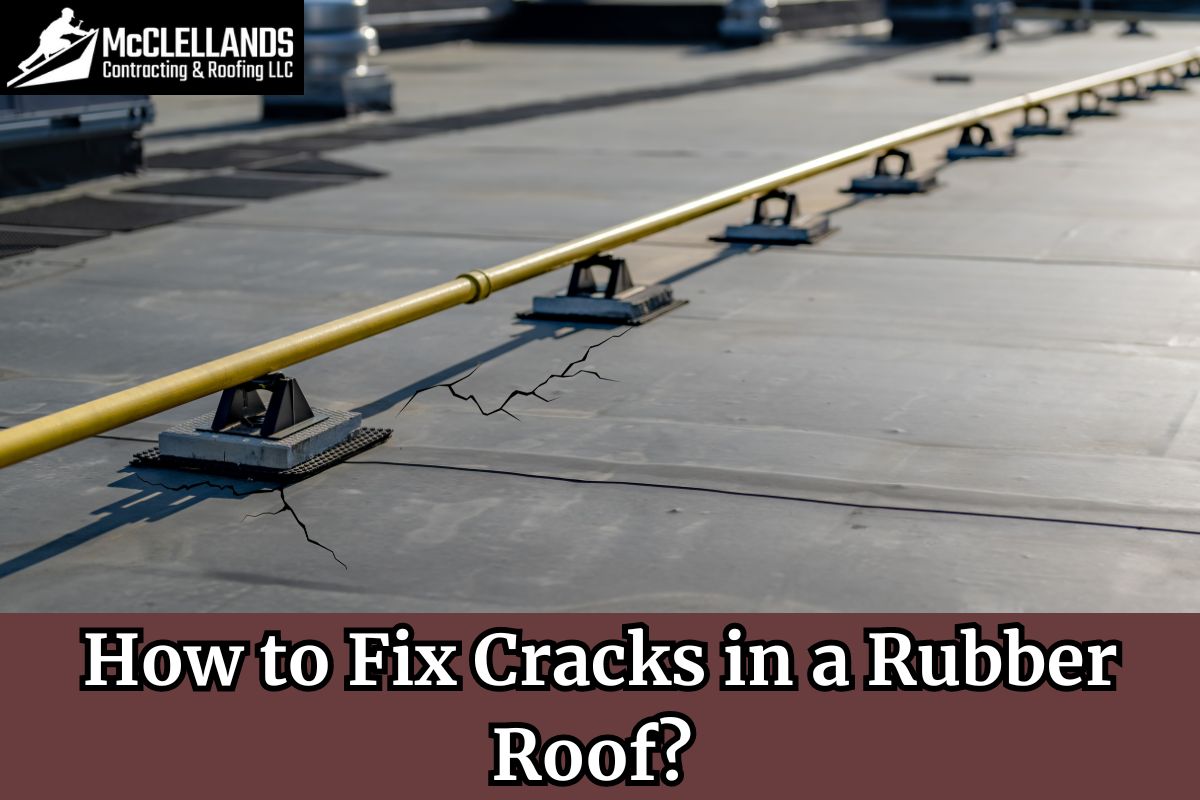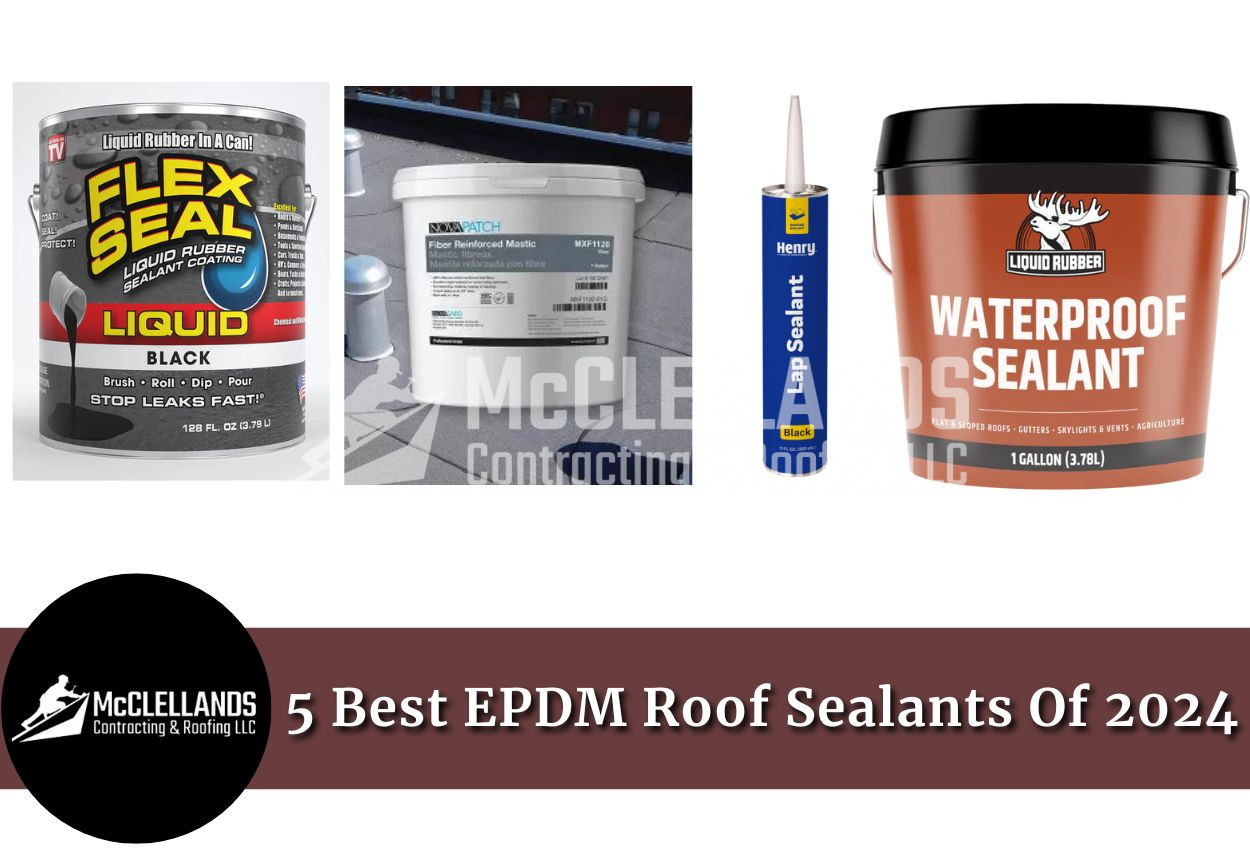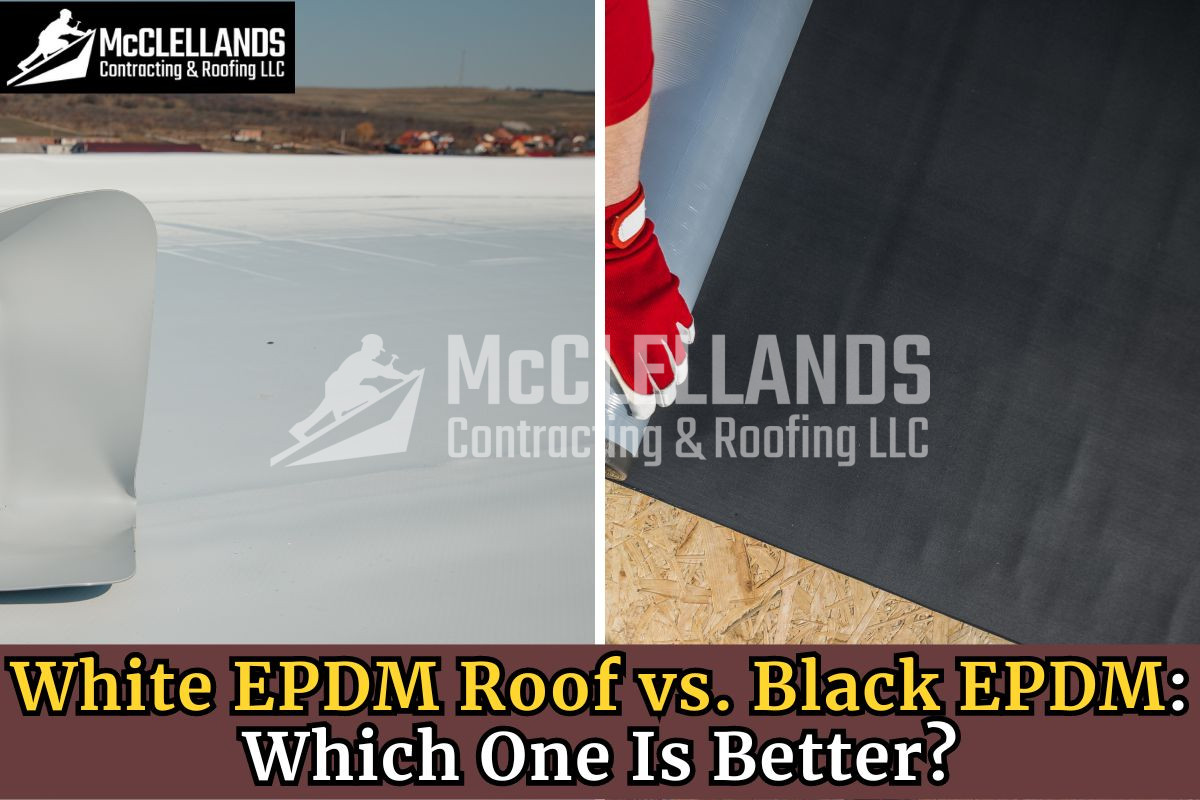Rubber roofs are a popular choice among building owners due to their durability and cost. EPDM is a common type of rubber roof that provides good protection against the weather. However, like any other roofing material, they require regular maintenance to guarantee they continue working effectively.
One of the most common issues that can affect rubber roofs is cracking. If left unaddressed, these cracks can result in leaks and more severe damage to your building's structure. That's why it's crucial to know how to fix cracks in a rubber roof. In this guide, we'll walk you through the process of identifying, repairing, and preventing cracks in your rubber roof, helping you maintain its integrity for years to come.
How To Identify Cracks in Rubber Roofs
Spotting cracks in your rubber roof early can save you from more expensive and major repairs down the line. Here’s what to look out for:
- If you notice any fine lines or fissures on the surface of the roof.
- Check for areas where the rubber appears thin or worn.
- Look for gaps or separations along seams or edges.
- If you notice any bubbles or blisters in the roofing material, they can also lead to cracking.
When inspecting your roof, pay close attention to areas around vents, chimneys, and other protrusions, as these are common spots for cracks to develop. Also, check areas where water tends to pool, as standing water can accelerate the deterioration of the rubber material.
Types of Cracks
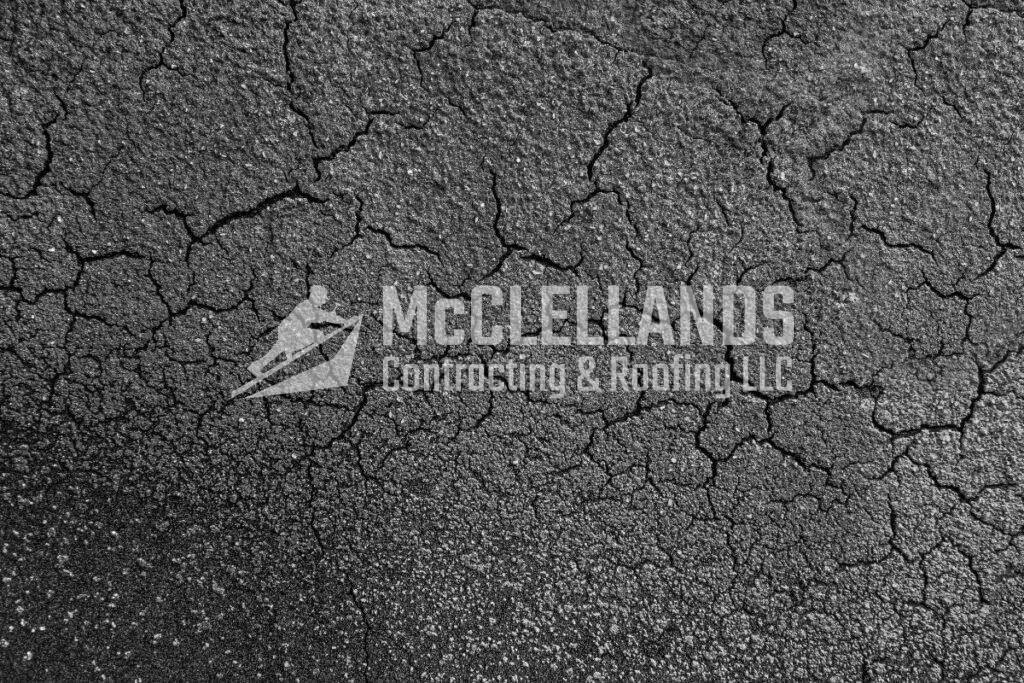
Not all cracks are created equal. Understanding the type of crack you're dealing with can help you find the best repair method:
Surface Cracks
These are shallow cracks that only affect the top layer of the rubber roof. They're often caused by normal weathering and can usually be repaired easily with sealants or coatings.
Large Cracks
These are deeper cracks that may extend through multiple layers of the roofing material. Large cracks require more extensive repairs, often involving patching or even partial replacement of the affected area.
Step-by-Step Guide to Fix Cracks
Next, we will share easy steps and a complete list of tools and materials you will need to fix rubber roof cracks.
Tools and Materials Needed
Before you start repairing cracks in your rubber roof, it's important to gather all the required tools and materials. Having everything on hand will make the entire repair process smoother and easier. Here's a list of tools you'll need for most rubber roof repair jobs:
| Tools | Usage |
| Soft-bristled brush | For cleaning the area around the crack |
| Trowel or putty knife | For applying sealant or adhesive |
| Scissors or utility knife | For cutting patches or trimming excess material |
| Roller | To ensure good adhesion of patches or coatings |
| Measuring tape | For accurately sizing patches |
| Bucket | For mixing or carrying cleaning solutions |
| Gloves | To protect your hands during the repair process |
| Safety glasses | For shielding your eyes from debris or chemicals |
Simple Steps To Fix Cracks In A Rubber Roof
As we shared above, there are two main types of cracks: surface cracks and large cracks. We are going to break down how to fix both of these in this section.
Preparation
Before you start any repair work, it's crucial to prepare properly. Always wear safety glasses and gloves to shield yourself. Second, choose a dry day with no rain in the forecast for at least 24 hours. Then, clean the surface properly using a brush and rubber roof cleaner to remove dirt and debris around the crack. Rinse thoroughly and allow to dry completely.
Repairing Surface Cracks
For minor and small surface cracks, follow these steps:
- Apply primer: Use EPDM primer around the crack, extending about 2 inches beyond the damaged area. Let it dry as per the manufacturer's instructions.
- Apply sealant: Using a caulking gun or trowel, apply rubber roof sealant directly into and over the crack. Spread it evenly, and feather it at the edges to blend it with the surrounding roof surface.
- Allow to cure: Let the sealant dry completely. This usually takes 24-48 hours, but check the product instructions for specific curing times.
Patching Large Cracks
For larger cracks or holes, you'll need to use a patch:
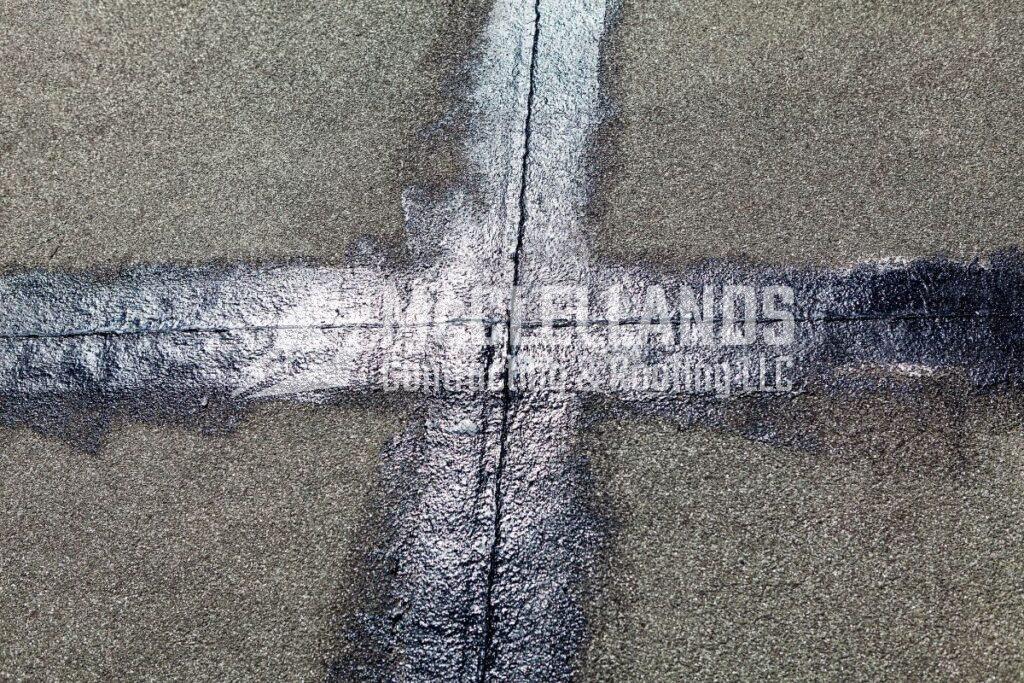
- Measure and cut the patch: Measure the cracked area and cut a patch that extends at least 2 inches beyond the damage on all sides.
- Apply primer: Use EPDM primer on both the roof surface around the crack and the underside of the patch. Allow it to dry until tacky.
- Apply the patch: Carefully place the patch over the crack, starting at one end and smoothing it down to avoid air bubbles.
- Roll for adhesion: Use a roller to press the patch firmly onto the roof, ensuring good contact across the entire surface.
- Seal the edges: Apply a bead of rubber roof sealant near the edges of the patch for extra protection against water infiltration.
- Allow to cure: Let the patch and sealant cure fully before walking on the repaired area.
You might also like: How Much Does EPDM Roofing Cost In Pennsylvania?
What Are The Other Common Issues with Rubber Roofs?
While rubber roofs are durable, they're not immune to problems. Other than cracks, some common issues include:
- Punctures: Sharp objects or falling debris can create holes in the roofing material.
- Seam separation: The seams where rubber sheets meet can come apart, leading to leaks.
- Shrinkage: Some rubber roofing materials may shrink over time, causing tension and potential tearing.
To catch these problems early, it's important to perform regular inspections of your rubber roof. We recommend checking your roof at least once or twice a year, generally in spring and fall and after any severe weather events. During these inspections, look for signs of wear, damage, or potential problem areas.
How To Prevent Cracks In Your New Rubber Roof
Fixing cracks is important, but preventing them is even better. Here are some tips to help maintain your rubber roof and prevent future cracking:
#1 Regular Maintenance
All roofs, no matter the type, need routine maintenance to reach or exceed their expected lifespan. Following these tips can keep your rubber roof in top shape:
- Check your roof thoroughly in spring and fall.
- Remove debris regularly to prevent damage and allow for proper drainage.
- Trim overhanging branches to reduce the risk of falling debris puncturing the roof.
- Fix small problems before they become big ones.
#2 Use Rubber Roof Coatings
Applying a rubber roof coating can significantly extend the life of your roof and help prevent cracks. Choose a product that is specifically designed for your type of rubber roof. Make sure the roof is completely clean and dry before application. Use a roller or sprayer to apply the coating in even layers. Most coatings should be reapplied every 5-10 years for ongoing protection.
Hire The Best Rated Roofers For Rubber Roof Services In Pittsburgh, PA!
If you are looking for durable and sturdy EPDM roof services in Pittsburgh, PA, and the surrounding areas, we are here to assist you. At McClellands Contracting and Roofing, we provide top-quality roofing services to home and business owners in Pennsylvania.
Whether you are looking for roof repairs, installation, or complete roof replacement, we’ve got you covered. We have a team of roofers who have years of experience handling different types of roofs, including rubber roofs. To get an estimate for your roofing project in 60 seconds, click here! To learn more, feel free to call us at (412) 353-5660.

